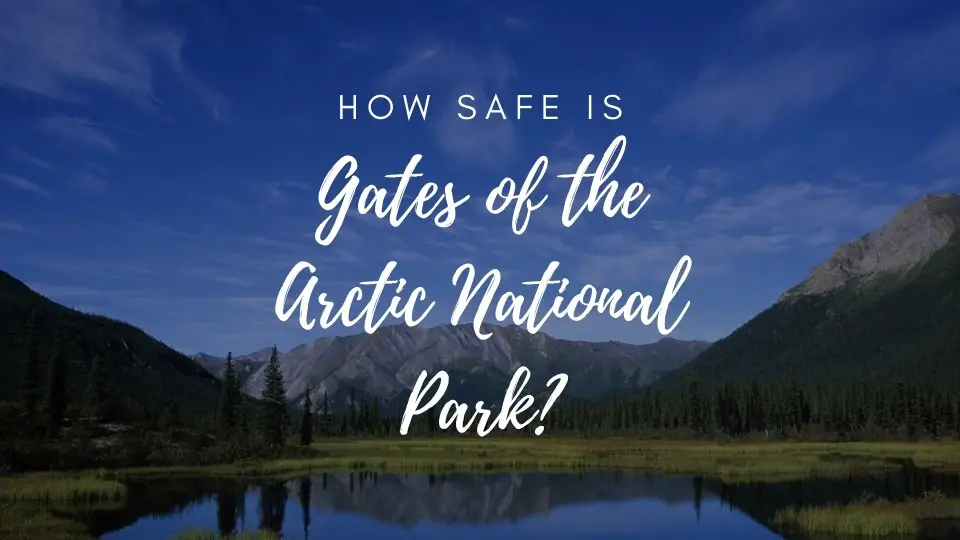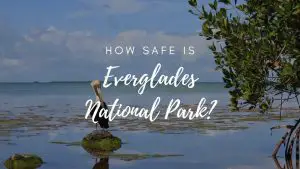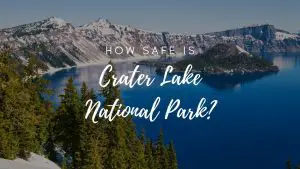Is Gates of the Arctic National Park Safe? (2023)

Gates of the Arctic National Park is a national park in Alaska that is known for its wilderness and remote location. The park is located north of the Arctic Circle and is one of the most remote national parks in the United States. So is Gates of the Arctic National Park Safe?
Gates of the Arctic National Park is also one of the least visited national parks, due to its remote location and lack of infrastructure. Despite its remote location and lack of visitors, Gates of the Arctic National Park is a safe place to hike and enjoy the wilderness. The park rangers and staff are experienced in dealing with the hazards of the wilderness and are committed to ensuring the safety of visitors.
If you’ve been planning a trip to Gates of the Arctic National Park, this article will give you everything you need to know about safety in the park. We’ll cover the hazards of the wilderness, the safety measures that are in place, and how to stay safe while enjoying your trip.
Quick Links
What Are The Biggest Dangers At Gates of the Arctic National Park?
Gates of the Arctic National Park is a hiker’s paradise. Located in Alaska, it is the highest, northernmost, and most remote national park in the United States. It is also one of the most dangerous. The following are the most significant dangers at Gates of the Arctic National Park.
The first danger is the terrain. The park is largely undeveloped, and much of it is only accessible by foot. The terrain is also constantly changing due to permafrost thawing and erosion. This can make it difficult to find a safe place to camp or hike.
The second danger is the weather. The park is located in a very cold climate, and the weather can be extremely unpredictable. Temperatures can drop well below zero, even in the summer. This can make it difficult to stay warm and can be dangerous for hikers, campers, and climbers.
The third danger is wildlife. There are many dangerous animals in the park, including black bears, brown bears, moose, wolverines, and caribou. These animals can be aggressive and can pose a threat to hikers and campers.
These are just a few of the dangers at Gates of the Arctic National Park. In the following sections, we will cover each of these dangers in more detail.
Is Gates of the Arctic National Park Safe At Night?
When hiking and spending time in nature, it’s important to be aware of the dangers that come with low visibility at night. There are more animals out at night, and it can be harder to see obstacles in your path. In general, it’s always best to hike with a partner and to let someone know your planned route.
Gates of the Arctic National Park is an especially wild place, and there are a few things to be aware of when exploring at night. Here are some tips for staying safe:
- Be aware of the wildlife. There are bears, caribou, and other animals in the park.
- Make noise. Sing, talk, or carry a bell with you to avoid startling animals.
- Stick to the trails. It can be easy to get lost in the dark.
- Be careful with fire. Only camp in areas that are cleared of vegetation, and be sure to extinguish your fire completely.
Is It Safe To Go Alone To Gates of the Arctic National Park?
Hiking alone can be risky and dangerous, but it can also be a thrilling and liberating experience. Before embarking on a solo hike, it’s important to assess the risks and make a plan to minimize them. In general, the risks of hiking alone include getting lost, being injured, and encountering dangerous wildlife.
Gates of the Arctic National Park is an especially challenging place to hike solo because of its remote location and rugged terrain. The park is located in the Alaskan Arctic, far from any roads or towns. This means that if you get lost or injured, it will be very difficult for anyone to find or help you. The terrain in the park is also very rugged, with steep hills, deep river valleys, and thick forests. This can make it easy to get turned around and lost. And finally, there are many dangerous animals in the park, including bears, moose, and wolves.
So, is the Gates of the Arctic National Park safe to hike alone? The answer is yes and no. It is possible to hike safely in the park if you take the necessary precautions, but it is also possible to encounter danger. If you are considering hiking in the park, make sure you are prepared for the challenges it presents. I would only recommend solo hiking in the park if you are an experienced hiker and have a detailed plan for your hike.
Is It Safe To Drink Water In Gates of the Arctic National Park?
It’s no secret that water is essential to survival. What many people don’t know is that drinking water from untreated sources in the wild can be dangerous. Every year, people fall ill, and some even die from drinking contaminated water. Some of the dangers of drinking untreated water include bacteria, viruses, and parasites. These can cause serious illnesses such as giardia, cholera, and dysentery.
The best way to protect yourself from these dangers is to purify your water before drinking it. There are a few different ways to purify water, including boiling, filtering, and using iodine tablets. Boiling is the most foolproof method, but it can be time-consuming. Filtering is a good option if you’re pressed for time, but make sure to use a filter that’s designed to remove bacteria and viruses.
The Wildlife Of Gates of the Arctic National Park
The wildlife of Gates of the Arctic National Park is both varied and abundant. You may see caribou, foxes, grizzly bears, Dall sheep, moose, and wolves, to name a few. Some of the smaller animals in the park include lemmings, voles, and ground squirrels. Birds are also plentiful in the park, and you may see bald eagles, ptarmigans, and owls.
While most of the wildlife in Gates of the Arctic National Park is harmless, there are a few animals that you should be aware of. Grizzlies are the most dangerous animals in the park, and should be given a wide space. If you see a grizzly, do not approach it, and make sure to make plenty of noise so as not to startle it. Wolves are also dangerous, but they are usually more afraid of humans than we are of them. But the same applies to wolves – if you see one, give it space and don’t try to approach it.
Hiking Safety Tips For Gates of the Arctic National Park
When hiking in Gates of the Arctic National Park, there are some safety precautions that should be taken in order to have a safe and enjoyable trip. Here are some safety tips to follow:
- First and foremost, hike with a partner, if possible. This will help in case of an emergency and also make the hike more enjoyable.
- Make sure to let someone know your hiking plans. This way, people will know where to look for you if something happens.
- Be aware of your surroundings at all times. This includes being aware of the weather conditions and terrain. Make sure you are properly prepared for the conditions.
- Bring plenty of food and water. Hiking can be strenuous, and you will need to stay hydrated and fueled.
- Carry a first-aid kit with you. This will come in handy if someone gets injured.
- Be cautious of wildlife. Do not approach or feed wildlife.
Conclusion
In conclusion, Gates of the Arctic National Park is a safe place to hike and explore, as long as a few simple precautions are taken. Remember to pack plenty of food and water, as well as a map and compass. Be sure to let someone know your plans, and follow established trails whenever possible. With a little planning and common sense, you can have a safe and enjoyable experience in this beautiful national park.






